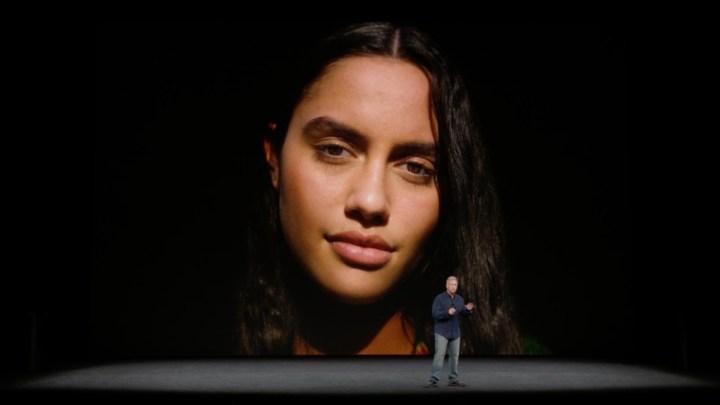
Put in the most simple terms, Portrait Lighting uses the depth map — captured by the dual cameras on the iPhone 8 Plus — to intelligently dodge and burn the contours of a human’s face to replicate the appearance of studio lighting.
As shown on stage inside Steve Jobs Theater, Portrait Lighting works hand in hand with Portrait mode, a camera feature first released last year alongside the iPhone 7 Plus.

To use Portrait Lighting, open up the iOS camera app and swipe over to the Portrait mode. Once a face is recognized, you can tap on the screen to bring up an overlay that features multiple lighting styles. These individual lighting styles include Natural Light, Studio Light, Contour Light, Set Light, and Set Light Mono. Each of the styles are designed to replicate a specific lighting setup that would traditionally be made with the help of three or four lights and light modifiers, except it’s all done through intelligent, selective brightening and darkening of facial features.
Normally, the process of dodging and burning an image would take a great deal of time inside a dedicated photo editing program. But, thanks to Apple’s clever implementation of its depth information and accompanying software, iOS can now do it with the tap of a button or two.

If it’s anything like the Portrait mode it works alongside, it could prove to be an impressive feature. And one that will likely improve as time goes on. In fact, Apple goes so far as to label the feature “beta” on its website, much like it did with Portrait mode in its infancy.
Will it be putting professional portrait photographers out of jobs anytime soon? No. But it’s a welcomed feature for the masses who don’t have access to thousands of dollars worth of studio lighting for their selfie needs.
Editors' Recommendations
- Apple responds to troubling iPhone 14 Pro camera issue
- Did Apple just forget about its brand-new Studio Display?
- Apple might drop support for the iPhone SE and iPhone 6S with arrival of iOS 16
- Apple will release five new Macs in 2022, but no one expected this MacBook Pro
- Apple will now let you fix your own iPhone in win for right-to-repair campaigners




